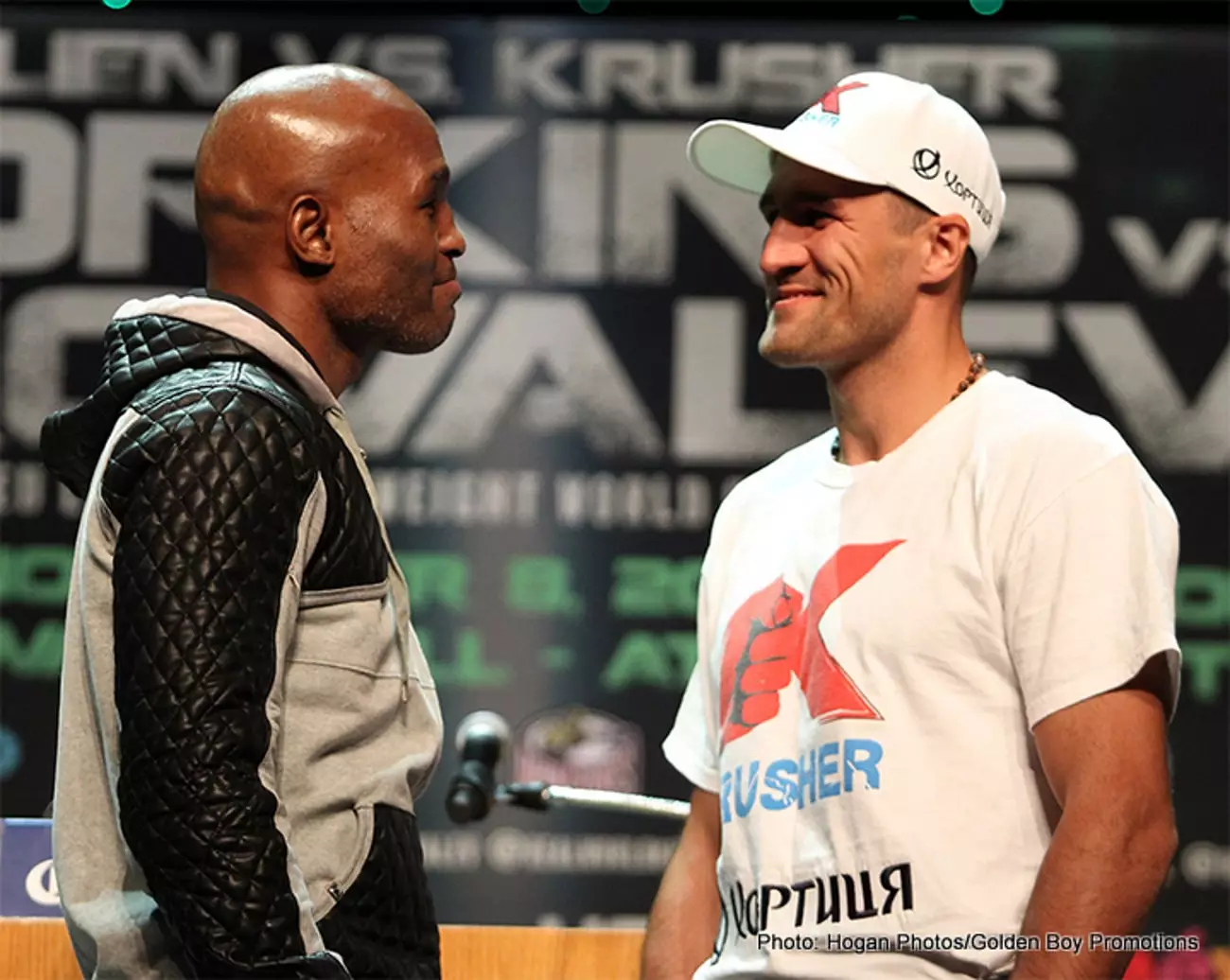On a fateful day ten years ago, boxing enthusiasts around the world witnessed a combat that not only tested the limits of athletic endurance but also highlighted the fragility of human strength against the relentless march of time. The 49-year-old Bernard Hopkins, a revered figure in the boxing community, prepared to face a much younger and formidable opponent, Sergey Kovalev. This wasn’t merely a matchup between two fighters; it was a juxtaposition of experience against brute strength—the seasoned strategist versus the powerful young gun. Hopkins had previously shown remarkable prowess in the ring, outmaneuvering ambitious rivals such as Kelly Pavlik and Jean Pascal. However, facing Kovalev, who was nicknamed “The Krusher” for his ruthlessly efficient knockout style, raised genuine concerns.
Hopkins entered the match holding two prestigious belts in the light-heavyweight division, boasting a record of 55 wins, 6 losses, and 2 draws. Remarkably, he had succeeded in achieving greatness while defying conventional wisdom regarding age in sports. His cunning strategy, honed through years of experience, allowed him to perform at an elite level, pushing the boundaries for a fighter in the twilight of his career. Fans admired him not only for his achievements but for his unique ability to adapt and evolve as a fighter. Yet, against Kovalev, the specter of father time loomed ominously.
As Kovalev approached the ring with an undefeated record of 25 wins, including an unbroken streak of knockouts, expectations were mixed. Fans speculated if Hopkins, with a rich legacy, was indeed risking too much. Was it honorable ambition or reckless folly? The fight, branded as “Alien Vs. Krusher,” resonated deeply, emphasizing the battle between youthful vigor and seasoned acumen.
Held at the iconic Boardwalk Hall in Atlantic City, the atmosphere buzzed with anticipation. Spectators braced themselves for an electrifying spectacle, perhaps envisioning a clash of titans. However, the match that unfolded was a stark contradiction to the expectations set forth by the fighters’ contrasting narratives. From the outset, the fight showcased Kovalev’s aggressive boxing style, leading to an immediate jolt when he knocked down Hopkins in the first round. This shocking moment served as an omen for what was to follow.
Rather than engage in a high-stakes battle, Hopkins resorted to a cautious strategy, opting for a defensive approach that many critics interpreted as a sign of fear. Fans watched as he circled and evaded, unwilling to take significant risks against a tempest of a fighter like Kovalev. The match concluded with a unanimous decision, with judges scoring it lopsidedly in favor of Kovalev. The numbers—120-106, 120-107, and another 120-107—spoke volumes about the one-sided nature of the contest.
Despite the defeat, Hopkins’s legacy had already been etched in stone. His willingness to challenge himself in the later stages of his career offered not just a masterclass in maturity but also a cautionary tale about the perils of extending one’s career too far. Even in loss, he retained his status as a boxing legend who dared to confront formidable challenges and never shied away from proving his prowess.
In the years that followed, Hopkins would again enter the ring, next squaring off against Joe Smith Jr. This encounter saw him meet a similar fate, with Smith Jr. achieving what Kovalev could not, ultimately knocking Hopkins out of the ring—a symbolic exit for a fighter who had transcended generations.
Conclusively, while Kovalev continued to experience his own ups and downs in the boxing realm, including his bouts with Andre Ward, the dichotomy of their legacies persists. For Hopkins, every challenge was a testament to his indomitable spirit, exhibiting the essence of a fighter and the inevitable toll of time. As boxing enthusiasts reflect on their clash, it serves as a reminder that the sport is as much about mental agility and resilience as it is about physical strength. This clash between two eras, while not as violent as anticipated, symbolized the delicate balance in boxing—one where glory and frailty coexist.

